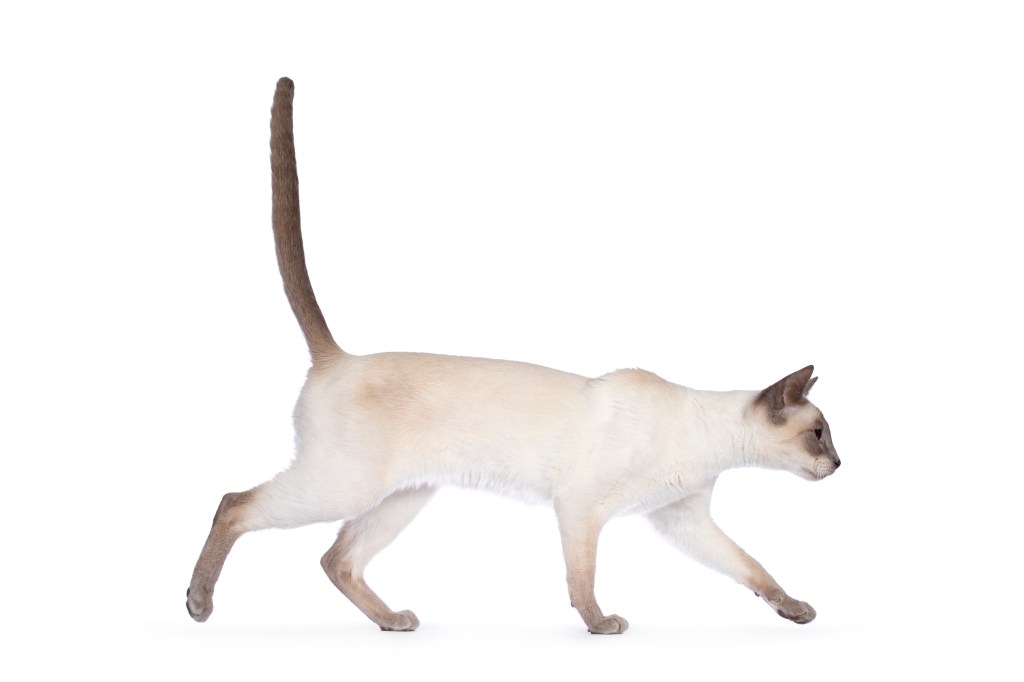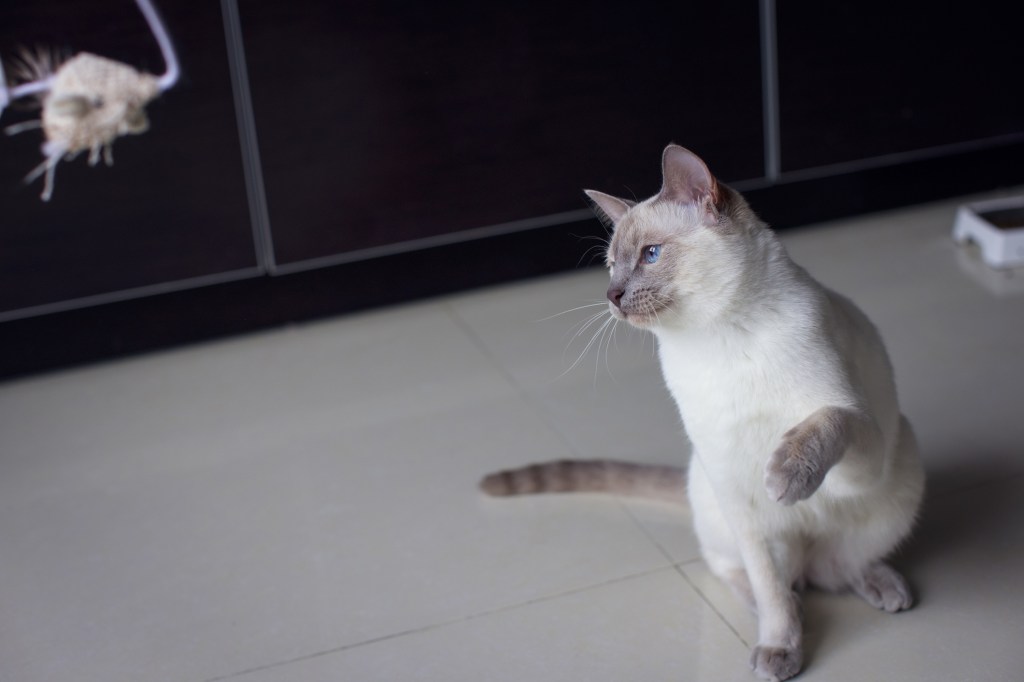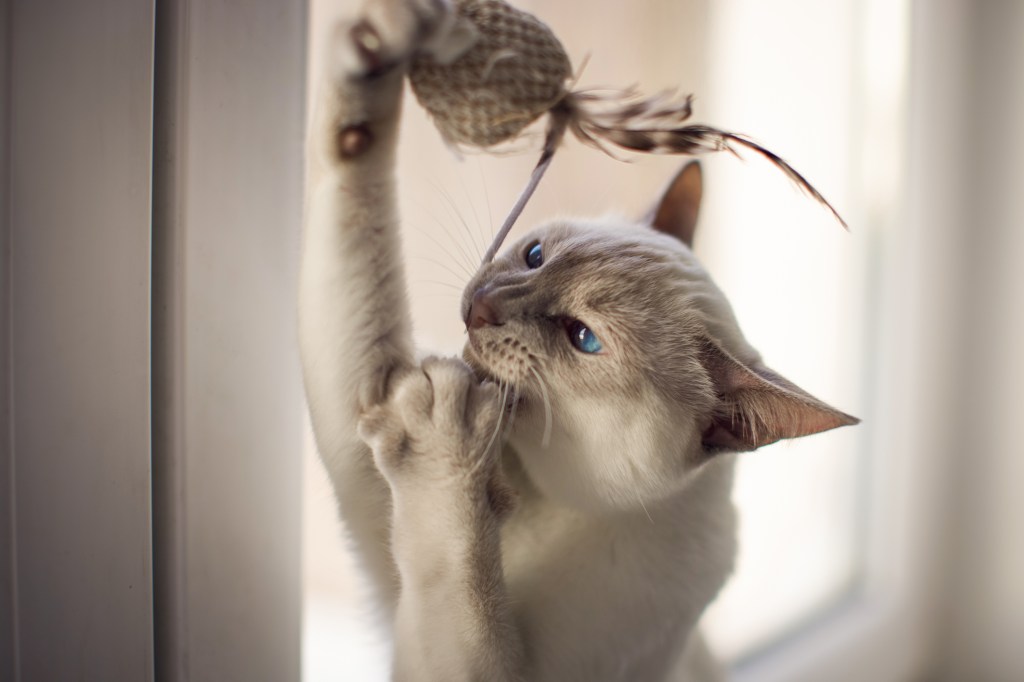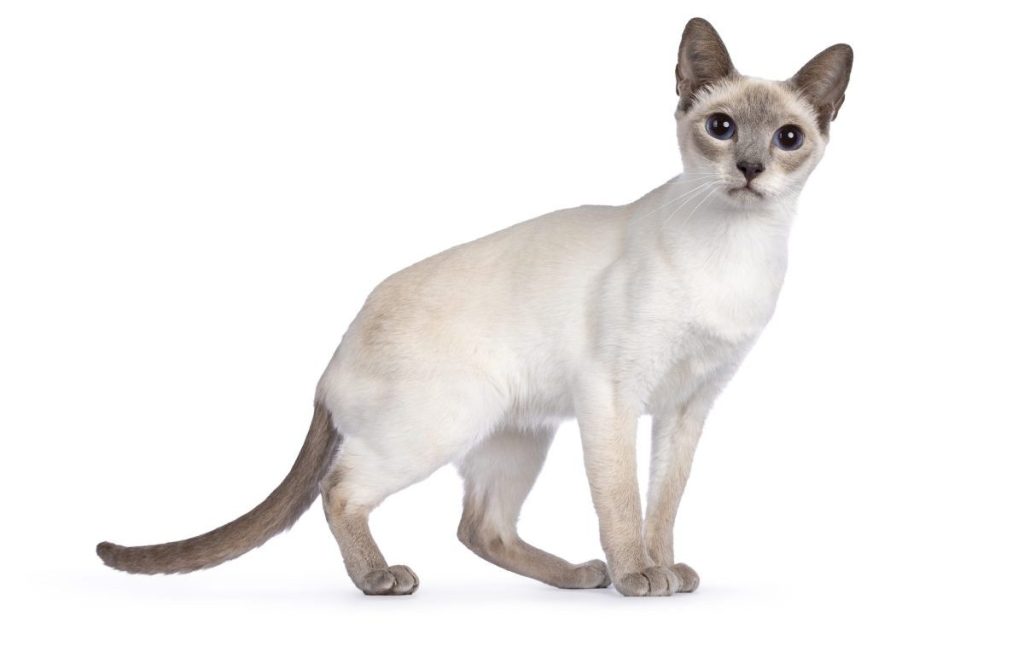The Thai Lilac cat captivates admirers with its striking appearance and charming personality. This breed, a relative of the Korat, hails from Thailand and holds a special place in the hearts of cat lovers worldwide. The “lilac” part of the breed’s name refers to their coat color. Renowned for their stunning lilac-blue coat, large green eyes, and distinctive heart-shaped face, the Thai Lilac cat exudes an air of elegance and grace. Beyond their visual appeal, this breed is celebrated for their friendly and affectionate nature. Additionally, these affectionate cats form strong bonds with its human companions.
The Thai Lilac is a natural cat breed cat, which means they developed without the need for human intervention. On a day-to-day basis, this breed behaves almost exactly the same as the related Korat cat, meaning they’re very people-focused felines who love to be around humans. If you want a sweet cat who’s friendly with just about everybody, this may be your new best friend.
When considering a Thai Lilac, it’s advisable to prioritize adopting from rescue organizations or shelters to provide a loving home to a cat in need. However, if you decide to purchase a Thai Lilac kitten, it’s crucial to choose a reputable breeder. Conduct thorough research to ensure that the breeder follows ethical practices and prioritizes the well-being of their cats. Reputable Thai Lilac breeders prioritize the health and temperament of their cats, conduct necessary health screenings, and provide a nurturing environment for the kitties. This active approach ensures that you bring home a healthy and happy kitty while discouraging unethical breeding practices.
Quick Facts
- Origin: Thailand
- Size: Medium
- Breed Group: Oriental Shorthair
- Lifespan: 10-12 years
- Coat: Short, dense, and silky, with a distinctive lilac or lavender color
- Temperament: Intelligent, playful, and affectionate
- Exercise Needs: Moderate
- Training: Easy to train
- Grooming: Weekly brushing
- Health: Generally healthy, but can have certain genetic health conditions, such as progressive retinal atrophy (PRA)
- Thai Lilac cats are the result of a recessive gene mutation in the Korat breed. Korat means “blue cat” in Thai, so any cats born without the blue coat cannot be a Korat.
- The coloring should be lilac all over, though there are Thai Lilac point cats, which resemble Siamese cats.
- Their eyes can change color as they age. Most Thai Lilacs have green eyes as adults.
Thai Lilac Pictures



Additional articles that will interest you:
- Best Cat Names
- Kittens & What To Expect
- Brain Games For Your Cat
- Indoor Exercise For Cats
- Cat Toys
- Cat Carriers
- Choosing A Veterinarian
- Cat Food And Nutrition
-
Affectionate with Family
Some cat breeds are typically independent and aloof, even if they’ve been raised by the same person since kittenhood; others bond closely to one person and are indifferent to everyone else; and some shower the whole family with affection. Breed isn’t the only factor that goes into affection levels; cats who were raised inside a home with people around feel more comfortable with humans and bond more easily.

See Cats Less Affectionate with Family -
Amount of Shedding
If you’re going to share your home with a cat, you’ll need to deal with some level of cat hair on your clothes and in your house. However, shedding does vary among the breeds. If you’re a neatnik, you’ll need to either pick a low-shedding breed or relax your standards. This furniture cover can make it easier to clean up cat hair and keep it off your sofa!
-
General Health
Due to poor breeding practices, some breeds are prone to certain genetic health problems. This doesn’t mean that every cat of that breed will develop those diseases; it just means that they’re at an increased risk. If you’re looking only for purebred cats or kittens, it’s a good idea to find out which genetic illnesses are common to the breed you’re interested in.
-
Potential for Playfulness
Some cats are perpetual kittens—full of energy and mischief—while others are more serious and sedate. Although a playful kitten sounds endearing, consider how many games of chase the mouse-toy you want to play each day, and whether you have kids or other animals who can stand in as playmates. A classic wand cat toy like this one is perfect for playful felines!
-
Tendency to Vocalize
Some breeds sound off more often than others with meows, yowls, and chattering. When choosing a breed, think about how the cat vocalizes and how often. If constant “conversation” drives you crazy, consider a kitty less likely to chat.
-
Kid-Friendly
Being tolerant of children, sturdy enough to handle the heavy-handed pets and hugs they can dish out, and having a nonchalant attitude toward running, screaming youngsters are all traits that make a kid-friendly cat. Our ratings are generalizations, and they’re not a guarantee of how any breed or individual cat will behave; cats from any breed can be good with children based on their past experiences and personality.
-
Friendly Toward Strangers
Stranger-friendly cats will greet guests with a curious glance or a playful approach; others are shy or indifferent, perhaps even hiding under furniture or skedaddling to another room. However, no matter what the breed, a cat who was exposed to lots of different types, ages, sizes, and shapes of people as a kitten will respond better to strangers as an adult.
-
Easy to Groom
Some breeds require very little in the way of grooming; others require regular brushing to stay clean and healthy. Consider whether you have the time and patience for a cat who needs daily brushing. You should definitely pick up this awesome de-shedding tool for cats of any hair length!
-
Intelligence
Some cat breeds are reputed to be smarter than others. But all cats, if deprived the mental stimulation they need, will make their own busy work. Interactive cat toys are a good way to give a cat a brain workout and keep them out of mischief. This scratcher cat toy can keep your smart kitty busy even when you’re not home!
-
Pet Friendly
Friendliness toward other household animals and friendliness toward humans are two completely different things. Some cats are more likely than others to be accepting of other pets in the home.
Thai Lilac History
The history of the Thai Lilac dates back to 1989 when a couple of Korat cats mated and produced a litter that included one kitten who was pink! The kitten was given the name Jenanca Lilac Lilee. When more of these kittens started to appear, they became known as Thai Lilac cats.
Their appearance is credited to recessive genes in the Korat cat. The Korat Breed Advisory Committee has officially recognized the Thai Lilac since 1993. These days, you can find Thai Lilacs in shelters or in the care of rescue groups. So make sure to consider adoption if you decide that this is the breed for you!
Thai Lilac Size
The Thai Lilac is a medium-sized cat. As is always the case, exact size standards might vary.
Most Thai Lilacs weigh around 15 pounds. Many can be smaller or larger than average.
Thai Lilac Personality
Just like the Korat, the Thai Lilac is a very social and inquisitive cat. They will often be found following around the people in their lives, and if there’s any action going on anywhere in the household, these felines will want to be right in the middle of it. Children and Thai Lilacs are a great combination–they will come to see each other as new best friends and play buddies.
But make sure you can provide enough attention to the cat–this is a breed that can develop behavior issues if left alone for long periods of the day on a regular basis. Be aware that the Thai Lilac also has a reputation as a very vocal and talkative cat–so get ready to have a cute new voice in the household! There’s a playful and curious side to the Thai Lilac, so make sure you can provide enough space for them to satisfy their physical need. Having safe, climbable furniture is definitely a bonus.
Thai Lilac Health
Thai Lilacs are generally considered to be healthy cats–although it’s important to schedule regular wellness visits with your cat’s vet. There aren’t too many breed-specific health problems associated with the Thai Lilac, but always keep an eye out for signs that your cat might be in distress or pain.
-
Gangliosidosis: Gangliosidosis is a rare and inherited lysosomal storage disease that can affect cats. Lysosomes are cellular structures responsible for breaking down and recycling various substances within the cells. In the case of gangliosidosis, there is a deficiency or malfunction in the enzymes responsible for breaking down certain lipids called gangliosides. There are two main types of gangliosidosis that can affect cats: GM1 gangliosidosis and GM2 gangliosidosis. Both types are caused by a genetic mutation, and affected cats inherit the condition from their parents.
Thai Lilac Care
As with all cats, it’s important to keep up your Thai Lilac’s regular veterinary checkups to detect any health concerns early. Your vet can help you develop a care routine that will keep your cat healthy. Beyond scheduling yearly wellness visits with your vet, make sure that you pick up a scratching post for your Thai Lilac’s living environment. This can help promote healthy scratching and keep the cat’s nails in good condition, which is very important for such an inquisitive cat breed.
The Thai Lilac cat’s ears should be examined regularly for signs of dirt building up or possible infection. Talk to your vet about starting a regular teeth brushing regime that will suit your cat. Your vet can advise you about specific brands and techniques. Finally, the Thai Lilac is definitely a cat breed that will appreciate a sturdy cat tree to play and interact with. This will keep the kitty stimulated and help prevent any behavior issues from arising.
Thai Lilac Coat Color And Grooming
The Thai Lilac sports a lilac-colored coat, which can often look a little pink in certain light. When it comes to grooming, the short-haired Thai Lilac cat is pretty low maintenance and will be good with weekly brushing sessions. This will help ward off the chances of any mats forming. Although ask your vet for tips if you find that your Thai Lilac doesn’t take to sitting still and being brushed at first.
In terms of climate, most Thai Lilacs are fairly adaptable felines, although they do tend to prefer warmer rather than colder places to live. Just remember to always make sure that there’s enough shade and fresh water available during the hotter months.
Children And Other Pets
The Thai Lilac is a top notch fit for families with young kids. Just make sure that early socialization takes place and boundaries are properly set on both sides. Supervise early interactions between young children and cats.
When it comes to other household pets, the social Thai Lilac usually fares well with most other domestic animals. But always make sure to supervise early interactions between the new cat and existing pets, too. Sometimes these relationships are very much dependent on the individual pets’ personalities. Ultimately, early socialization really pays off with this breed. Make sure to reward your Thai Lilac for good behavior when you bring them home to your family!
Thai Lilac Rescue Groups
It may be hard to find a breed specific rescue for Thai Lilac cats because they are a somewhat uncommon breed. However, you may want to try shelters and rescues that cater to all types of cats, including Thai Lilacs, as well as your local shelter. Here are some nonprofit rescues you can try:
More Info For You
If you’re also looking for a dog, check out DogTime’s dog breed page!





